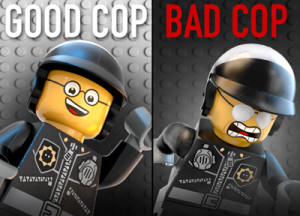Agile coaching demands many skills of the practitioner. In addition to being conversant in common agile processes, we are also called to serve as teacher, facilitator, mentor, counselor, negotiator, and leader. Of course, this is a partial list; there may be no limit to the skills identified as valuable to our coaching profession.
Where did you learn these skills? If you weren’t born with these skills or have them injected into your being, how did you acquire them? Books, videos and training courses can help, but on the job is perhaps the quickest and most lasting method. Did you have someone training you how to train? How to facilitate or lead your first team? Chances are that you were thrown into the fire like most of us.
Now imagine that you did have a mentor to guide you along your path, someone to show you how to lead a retrospective and offer advice when your team just stared at you dumbly. I’m not talking about your CSM instructor or your boss who gives you encouragement once a week, but an honest-to-goodness partner with you on the job.
That is one pattern of pair-coaching.
Here is another example. Let’s suppose that you’re involved in a transformation effort. You and a colleague want to introduce agile methods and scrum practices that will represent a different way of working, but some team members want nothing to do with this – for them the medicine is hard to swallow.
This is a case where your partner might play a more “prescriptive” role, clarifying the need and structural changes with little emotion invested in her delivery. Your role as the counterpart would be to offer deep empathy – providing an open ear or a shoulder to cry on – while also offering a softer interpretation of why the organization is trying this change. You, the “progressive”, help the transition to this different mindset.

Pair-coaching is not anything new in the workplace. You may be practicing one or more patterns without being aware of it. Once made visible, the value of coaching in pairs should become apparent.
There are many patterns that pair-coaches can fill. A few that we will examine include:
- Trainer / Observer
- Driver / Navigator
- Contrarian (Progressive / Prescriptive)
- Senpai / Kohai (mentor / protege)
- Co-learners
Trainer / Observer
With new teams adopting agile practices, it’s almost certain that training will be necessary. Often a trainer works alone; showing up to set up the room, greet arriving participants, communicate & demonstrate the concepts, take questions and mind the agenda (including breaks, meals and other time-boxed events). That could be quite a lot to handle, especially if the audience is large or varied in their prior experience with (and reception of) the topics.
With a partner, much of the burden is eliminated from the primary trainer’s responsibility. (For non-training events, a co-facilitator becomes useful for the same reasons.)
In this pair-coaching scenario, one coach may lead the training while the second may:
- observe to offer feedback later
- tag-in and lead other slides of same training
- be called upon as an expert (SME) or for her experience/validation
- scan the audience for outliers / those needing attention
Driver / Navigator
Han had Chewie. Michael Knight had KITT.
This pairing closely resembles the Trainer/Observer, but it can happen outside of the full team environment. In other words, an activity with only the coaches participating (e.g. drafting a retrospective agenda) can benefit from a second pair of eyes. Similar to how developers may engage in pair-programming, two (or more) coaches can make light work of otherwise daunting tasks, saving time, catching errors and preventing rework. A Product Owner / ScrumMaster relationship may make use of this dynamic during (for instance) a story writing exercise or preparing for a complex backlog grooming session.
To extend the navigator role a bit, an internal coach may pair with an external coach to provide a much needed map of the terrain. When outsiders come to an engagement, the organization may be charged with mistrust and fear (why else would the outsider have been brought in?). Having a “man on the inside” helps to get the “lay of the land” with regards to the organization’s culture and politics, potentially helping to avoid the minefield altogether.
The Contrarian
The earlier example showed one instance of this common usage. As a coach, you may find there are times when the team (or one member) resists what is being suggested, even being demanded. In these cases, try having one partner offer a prescriptive approach, while the other provides counterpoint. If there’s a bitter pill, there should be empathy.
Additionally, when constructive conflict is habitually missing from team discussions, introducing an alternate viewpoint may encourage necessary debate. Two partners can take opposing views in the effort to model a constructive dialogue.
Senpai / Kohai
The Japanese culture is rich in traditions of well-defined social behaviors, and the senpai/kohai relationship is one of the most popular. Similar to a mentor / protege (or a senior / junior) pairing, this role can be thought of as a more formalized “buddy system” to be used when newer members join an organization (eg. company, school, sports club). The senpai serves as a mentor of sorts, showing his charge the ropes – guiding, protecting and teaching. The kohai offers his full attention and respect to the senior, even though the two may be very close in age and status.
This can be a very beneficial role to play as an agile coach, whether you are the mentor of the mentee. Thinking back to your first days on the job, did someone help you with onboarding, telling you how to navigate the HR paperwork, where to submit the expense reports and what time is best for booking the meeting rooms? In Japan, the two may bond over dinners or drinks engaged in casual conversations, and the senpai/kohai relationship often lasts many years or decades, usually well past the individuals’ tenures at the organization.
Co-learners
When the subject matter is new to both participants, or the terrain is dangerous, each coach helps the other understand in very short feedback loops. Much like infantry soldiers on a dangerous battlefield, high-performing teams offer encouragement to each other as they make their way through uncharted and challenging territory.
The experience levels of both participants are often close in this role, neither being expert in the new subject or working environment. This type of dynamic may happen when we pair up to do exercises at a conference or other training session. If you’ve ever joined a coaching circle, your assignment could call for you to relate your experiences to a partner who’s job might be to actively listen and understand before swapping roles.
Much in the same vein as saying “two heads are better than one”, I think of the parable of the blind men describing the elephant. Each of us has our own perspective on things, but by listening to and learning from each other, we help increase our own knowledge bit by bit.
What’s Next?
Those are five of the roles that can be played by coaches who work in pairs. It’s likely that there are more, whether obvious or not. The goal of this post was to define these roles so that we can have a common set of terms to use when discussing how to become better coaches by working in pairs. Although I believe that there is very large value to be discovered by pair-coaching, I am not calling for every coach to work with a partner on all projects at all times.
Over the next several months I will be attending Agile Opens (#AONW begins this week), Coach Camps (I will host ACCUS in Irvine) and a Coaching Retreat, and at each event I will do my best to engage others in this dialogue. It’s my hope to use the matrix below to see where we feel each role fits best given the situations I just described. If you see me there, feel free to pair up with me!


